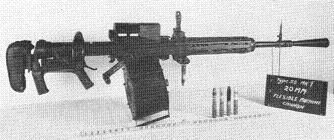![]() The Pacific War Online Encyclopedia
The Pacific War Online Encyclopedia
|
| Previous: Japanese 20mm Type 97 cannon | Table of Contents | Next: Japanese 25mm/60 Antiaircraft Gun |
| Type 99 Model 1 cannon (flexible mount) | Top: Type 99 Model 1 Mark
3 cannon. Bottom: Type 99 Model 2 Mark 3 cannon. |
|
 U.S. Navy. Via Francillon (1979) |
|
 |
| Projectile weight
|
4.5 ounces or 128 grams |
| Velocity | 1970 feet per second or 600 meters per second (Model 1) 2490 feet per second or 759 meters per second (Model 2) |
| Range | 2625 to 3280 feet 800 to 1000 meters |
| Gun weight |
55 lbs or 25 kg (Model 1) 80 lbs or 36 kg (Model 2) |
| Rate of
fire |
520 rounds per minute (Model 1) 490 rounds per minute (Model 2 Mark 3) 620 rounds per minute (Model 2 Mark 5) |
| Gun power |
96 (Model 1) 120 (Model 2) |
The Type 99 was the standard cannon on Japanese naval aircraft throughout
the
war, appearing in both fixed and flexible variants. It was
based on the Oerlikon, for which the Japanese had negotiated a manufacturing license in 1936, but it was continually
improved and refined. Early marks were known simply as E-shiki
("Oerlikon Type") guns, and it was not until 1941 and 1942 that the
Model 1 and Model 2 were so designated. As with all Oerlikon variants,
the Type 99 action was blowback with advanced primer ignition.
The Type 99 was not an outstanding weapon.
Although its APIB action made the Type 99 one of the lightest aircraft
cannon of the Second World War, suitable for the equally light Japanese
Navy airframes, this came at the cost of a low muzzle velocity and rate
of fire. The Type 99 was inferior to the Japanese Army's excellent Ho-5 cannon, which used a short recoil action, in every respect except overall weight. However, with the A6M "Zero"
under design at the time that the Type 99 was adopted, weight was the
preeminent consideration. It did not help that there was practically no
cooperation between the Army and Navy on weapons systems and that the
manufacturer of the Type 99, the Tomioka Weapons Works, had been set up
by retired Navy officers.
The Model 1 was based on the Oerlikon FF and came
in both fixed and flexible marks. Early models were fed from 60-round
drums, but by
1942 this was replaced with a 100-round drum. The Model 1 Mark
4 was belt-fed and had a slightly faster rate of fire than the other
marks. All marks had rather low muzzle velocities, which initially made them unpopular with aircrew.
The Model 2 was based on the Oerlikon FFL and came into use as airframes became large and strong enough to accommodate the bigger, more powerful gun. However, the Model 2 did not completely close the performance gap with the Ho-5. All marks were fixed guns, though these were sometimes installed in mechanical turrets for use in flexible gun positions. As with the Model 1, early marks used 60- or 100-round drums, while the Model 2 Mark 4 and Model 2 Mark 5 were belt-fed. The Mark 5 introduced a number of innovations in the belt feed and bolt buffer to achieve a higher rate of fire, but it was not introduced until May 1945 and saw little service.
 NARA |
 NARA |  U.S. Army |
 |
References
Chinn (1951; accessed 2013-9-12)
Mikesh (2004)
Williams and
Gustin
(2003)
The Pacific War Online Encyclopedia © 2007, 2009, 2013 by Kent G. Budge. Index